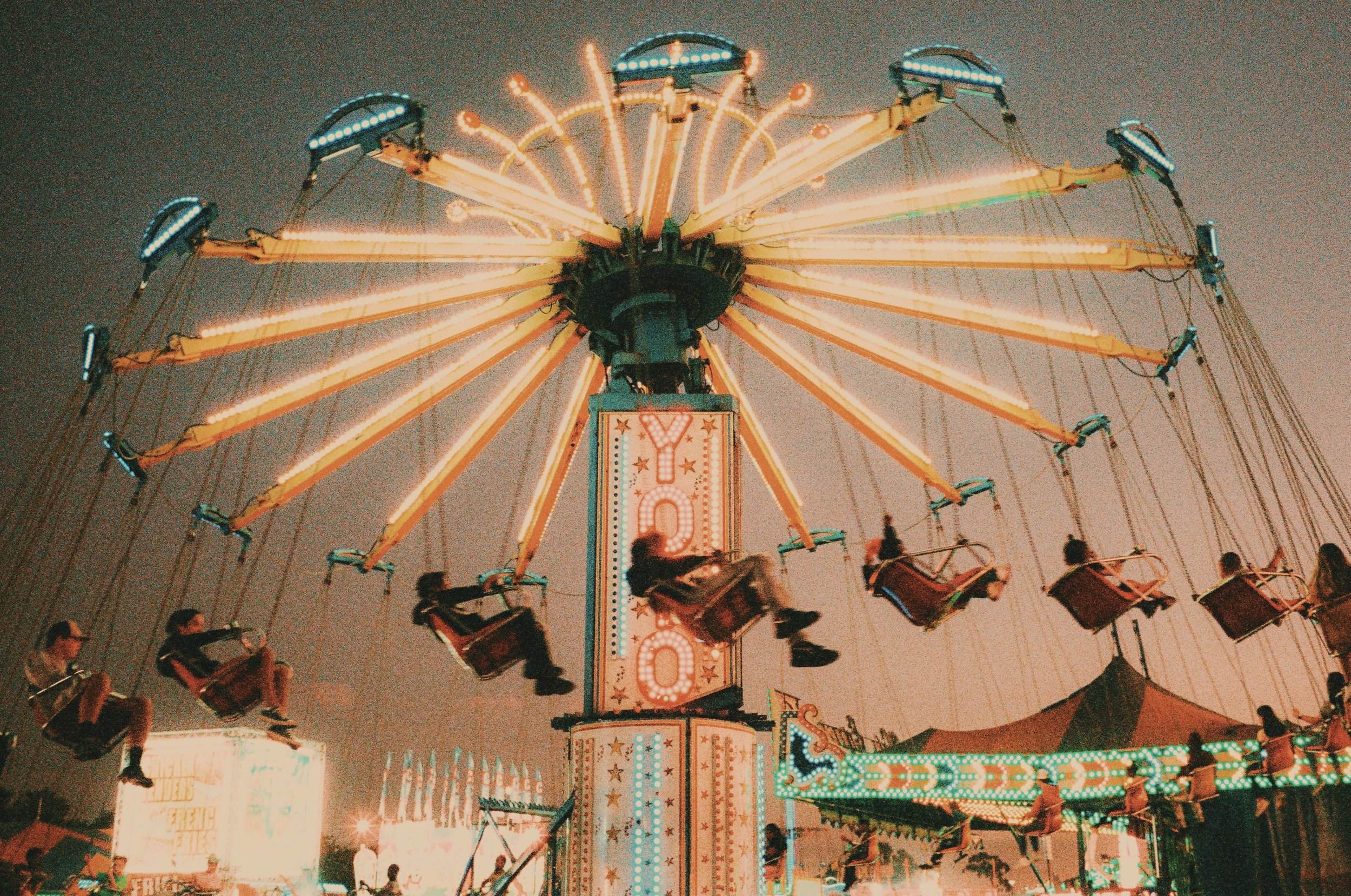Reignite Your Passion: 43 Powerful Strategies to Overcome Photography Burnout and Boost Creativity
Kelsey Smith Photography©
*Disclosure: This post may contain affiliate links that at no additional cost to you, I may earn a small commission.
Photography is an incredibly rewarding and fulfilling creative pursuit, but it can also be mentally and emotionally demanding. Burnout, the state of emotional, physical, and mental exhaustion caused by prolonged stress, can affect photographers of all skill levels and backgrounds. It's essential to recognize the signs of burnout and take proactive steps to maintain a healthy, sustainable photography practice. In this blog post, we'll explore 43 interesting strategies for combating photography burnout, from self-reflection and experimentation to collaboration and goal-setting. By implementing these approaches, you can reignite your passion for the art form, foster personal and professional growth, and cultivate a more fulfilling and inspired photography journey.
Experiment with New Techniques and Styles
Kelsey Smith Photography©
Diving into new techniques and styles can breathe new life into your photography and help combat burnout. Here are some ideas to expand your creative horizons:
Macro Photography: Get up close and personal with your subjects by capturing the intricate details of small objects or scenes. This requires a macro lens or extension tubes, and it will challenge you to focus on minute details, textures, and patterns you may have never noticed before.
Long Exposures: Experiment with capturing motion and the passage of time by using long exposure techniques. This could involve photographing waterfalls, cityscapes at night, or moving clouds. You'll need a tripod and a neutral density filter to achieve the desired effect, but the results can be truly mesmerizing.
Infrared Photography: Explore the unseen world of infrared light by using a specially converted camera, infrared film (if you want to spend a billion dollars), or an infrared filter. This will allow you to capture unique, otherworldly images that reveal a hidden spectrum of light, transforming landscapes and scenes into dreamlike compositions.
Alternative Lenses: Step away from your go-to lenses and experiment with different options, such as a fisheye lens for dramatic distortion, a tilt-shift lens for selective focus, or vintage lenses for unique character and bokeh.
Creative Lighting: Push the boundaries of your lighting skills by exploring off-camera flash, light painting, or using unconventional light sources like colored gels. This can add depth, mood, and visual interest to your images.
Experiment with Post-Processing: Delve into different post-processing methods and styles, from subtle adjustments to dramatic manipulations. Learning new editing techniques can significantly impact the final look of your images and open up new creative avenues.
Composite Photography: Combine multiple images or elements in post-processing to create surreal, imaginative scenes that push the limits of reality. This can involve blending exposures, creating panoramas, or designing fantastical compositions with the help of Photoshop or other editing software.
Film Photography: Reconnect with the roots of photography by shooting with film. The tactile and more deliberate nature of film photography can help you slow down, be more mindful of your composition, and appreciate the process of creating an image.
Street Photography: Immerse yourself in the world of candid moments and urban storytelling by delving into street photography. This genre will challenge you to capture the essence of humanity and the environment, forcing you to think on your feet and make quick decisions.
Set Personal Projects or Challenges
Kelsey Smith Photography©
Personal projects and challenges can provide a much-needed sense of direction and purpose, helping you to focus your energy and overcome photography burnout. Here are some ideas to kickstart your creativity:
365 Project: Commit to taking one photo every day for an entire year. This forces you to consistently practice your photography skills and challenges you to find new subjects and perspectives, even on days when inspiration is low.
Themed Photo Series: Choose a theme that interests you, such as colors, shapes, emotions, or a particular subject matter. Create a series of images that revolve around this theme, allowing you to explore it from various angles and develop a cohesive body of work.
Self-Portraits: Capture a series of self-portraits that convey different moods, expressions, or narratives. This can be a deeply personal project that allows you to explore your own identity and emotions, while also improving your portrait photography skills.
Documenting Change: Choose a subject that is undergoing change or transformation, such as a construction site, a plant's growth, or a person's mental health journey. Document the progress over time through regular photographs, creating a visual narrative of the transformation.
Abstract Photography: Challenge yourself to create a collection of abstract images that focus on form, color, and texture rather than recognizable subjects. This can help you develop a more refined eye for composition and visual balance.
A-Z Project: Create a photographic alphabet by capturing images that represent each letter of the alphabet, either literally or metaphorically. This project can encourage you to think creatively and look for interesting subjects in your everyday environment.
Monthly Challenges: Set specific monthly challenges, such as shooting only in black and white, using a particular lens, or focusing on a specific technique. This can help you hone your skills in a targeted way, while also keeping you engaged and motivated.
Photo Essay: Tell a story through a series of images, whether it's documenting a day in the life of someone you know, showcasing the behind-the-scenes of a local business, or capturing the atmosphere of an event or festival.
Revisit Your Old Work and Analyze Your Progress
Taking the time to review and analyze your old photographs can be a powerful way to combat burnout, as it helps you recognize your growth and development as a photographer. Here are some ways to reflect on your past work and use it as a source of motivation:
Organize Your Archive: Sort through your archive of photographs, organizing them chronologically or by theme. This process can help you rediscover forgotten gems and recognize patterns, strengths, and areas for improvement in your work.
Identify Turning Points: Look for pivotal moments or milestones in your photography journey, such as a particular project, collaboration, or personal event that influenced your work. Reflect on how these turning points shaped your growth and development as a photographer.
Re-edit Old Images: Revisit some of your older photographs and try re-editing them using the skills and techniques you've acquired since you first worked on them. This can be a rewarding exercise that highlights your growth in post-processing and artistic vision.
Create a Retrospective Portfolio: Compile a collection of your best work from different stages of your photography journey. This retrospective portfolio can serve as a visual representation of your progress and achievements, reminding you of how far you've come.
Share Your Evolution: Consider sharing your journey and progress with others, either through a blog post, social media, or in-person discussions. Sharing your experiences can inspire others and invite valuable feedback, while also reaffirming your own growth and development.
Set Future Goals: Reflect on the areas in which you'd like to improve or the new techniques and styles you'd like to explore in the future. Use your analysis of your past work to inform your goals and create a roadmap for your ongoing development as a photographer.
Seek Inspiration Outside of Photography
Looking for inspiration beyond the realm of photography can help combat burnout by providing fresh ideas, perspectives, and creative fuel. Here are some ways to broaden your horizons and find inspiration in other art forms and aspects of life:
Visual Arts: Explore the works of painters, illustrators, and sculptors from different periods and styles. Studying their use of color, light, and composition can provide valuable insights and inspiration for your own photography.
Literature: Read novels, poetry, essays, and other written works to stimulate your imagination and develop a deeper understanding of storytelling, narrative, and human emotions. This can help you create more compelling and emotionally resonant images.
Cinema: Watch movies, documentaries, and experimental films that showcase unique visual styles, storytelling techniques, and creative approaches to cinematography. Analyze the way filmmakers use lighting, framing, and camera movement to tell a story and evoke emotions.
Architecture and Design: Study the principles of architecture and design, paying attention to the way spaces, shapes, and lines interact. This can help you develop a stronger sense of composition, balance, and visual harmony in your photography.
Music: Listen to a wide range of music genres, focusing on the emotional expression, rhythm, and structure of the compositions. Music can evoke powerful feelings and moods that can be translated into your photography.
Nature: Spend time in nature, observing the patterns, textures, colors, and forms found in the natural world. The beauty and diversity of nature can inspire new ideas and perspectives for your photography.
Travel and Culture: Immerse yourself in different cultures and environments by traveling or exploring your own city with fresh eyes. Experiencing new places, people, and customs can provide a wealth of inspiration and help you see the world from different viewpoints.
Conversations and Personal Connections: Engage in meaningful conversations with people from various backgrounds and walks of life. Listening to their stories, experiences, and perspectives can inspire new ideas and deepen your understanding of the human condition.
Set Realistic Goals and Manage Expectations
One of the causes of photography burnout is setting unrealistic goals or having excessively high expectations for your work. To avoid becoming overwhelmed and maintain a healthy relationship with your photography, it's essential to set achievable goals and manage your expectations. Here are some strategies for doing so:
Break Down Goals into Smaller Tasks: Rather than setting large, daunting goals, break them down into smaller, more manageable tasks. This approach can make your goals feel more achievable and help you stay motivated as you make incremental progress.
Prioritize Your Goals: Determine which goals are most important to you and prioritize them accordingly. Focus on accomplishing the most critical tasks first, and avoid overloading yourself with too many competing objectives.
Set Realistic Deadlines: When setting deadlines for your goals, be honest with yourself about how much time and effort each task will require. Give yourself ample time to complete each task, and avoid setting overly ambitious deadlines that may lead to stress and burnout.
Celebrate Your Achievements: Acknowledge and celebrate your accomplishments, no matter how small they may seem. Recognizing your progress can help you stay motivated and maintain a positive mindset.
Accept Imperfection: Understand that not every photo you take will be a masterpiece, and that's perfectly okay. Embrace the learning process and the fact that growth and improvement come from trial and error.
Adjust Your Expectations: Remind yourself that photography is a journey, and it's natural for your skills and style to evolve over time. Be patient with yourself and adjust your expectations accordingly, allowing yourself the space to grow and develop as an artist.
Seek Constructive Feedback: Share your work with trusted peers or mentors and ask for honest, constructive feedback. This input can help you identify areas for improvement, set realistic goals, and maintain a healthy perspective on your progress.
Collaborate with Other Photographers or Creatives
Collaborating with other photographers, artists, or creatives can be an effective way to combat burnout by introducing new ideas, techniques, and perspectives to your work. Engaging in collaborative projects can also provide motivation, support, and a sense of camaraderie. Here are some ideas for initiating and participating in creative collaborations:
Photo Walks and Group Shoots: Organize or join photo walks or group shoots with fellow photographers. These events provide opportunities to learn from one another, exchange ideas, and share experiences in a supportive environment.
Joint Projects or Exhibitions: Partner with another photographer or artist to create a joint project or exhibition that showcases both of your unique perspectives and styles. This collaboration can push you to think outside the box and explore new creative territory.
Workshops and Mentorship: Engage in workshops or mentorship programs where you can learn from experienced photographers or artists. This exchange of knowledge and skills can inspire growth and development in your own work.
Creative Collaborations with Models, Stylists, or Makeup Artists: Team up with models, stylists, makeup artists, or other creatives to produce unique and engaging photo shoots. These collaborations can introduce you to new techniques, ideas, and visual styles.
Networking and Community Involvement: Actively engage in your local photography community by attending events, joining clubs, or participating in online forums. Building connections with other photographers and creatives can lead to potential collaborations, friendships, and support.
Conclusion
Overcoming photography burnout requires a multifaceted approach that addresses the various factors contributing to creative exhaustion. By engaging in self-reflection, exploring new creative outlets, seeking inspiration from diverse sources, setting realistic goals, and embracing collaboration, you can successfully combat burnout and reignite your passion for photography. Remember, growth and development as a photographer are ongoing processes that require patience, persistence, and adaptability. Embrace the journey, and don't be too hard on yourself; the key to maintaining a sustainable and enjoyable photography practice lies in finding balance and continuously nurturing your creative spirit. By implementing these strategies, you'll not only overcome burnout but also unlock new levels of creativity, inspiration, and fulfillment in your photography journey.
Everything you need to get started with 35mm film:
Cameras - eBay
Film - Amazon
Cinestill CS41 Developing Kit - Amazon
Epson V600 Flatbed Scanner - Amazon









